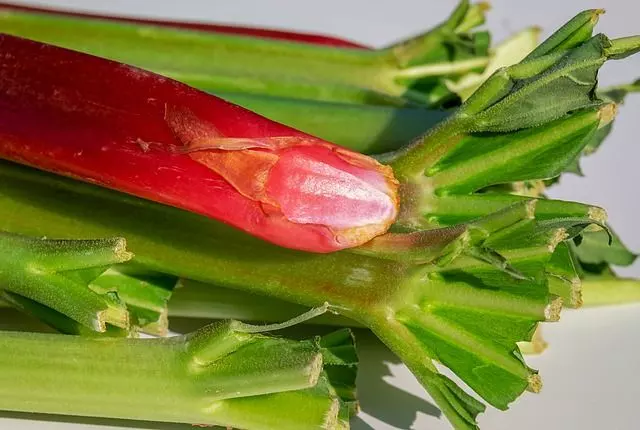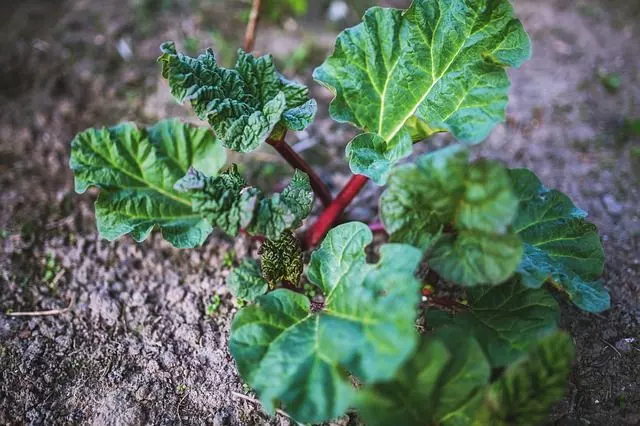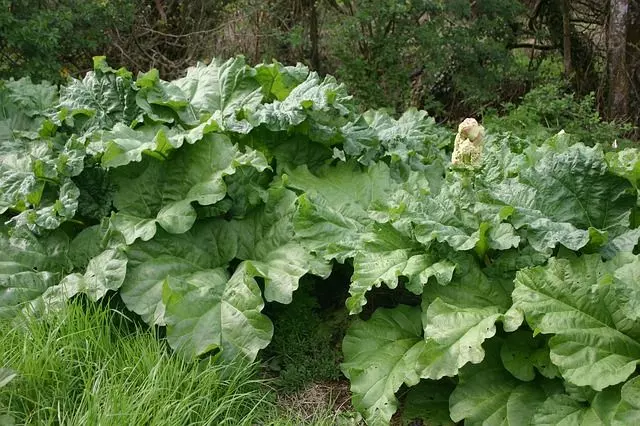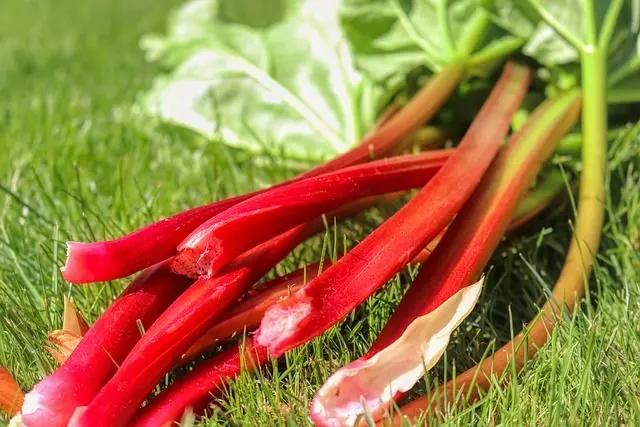Rhubarb is a perennial plant that can be grown without problems both in pots and in the garden. Its growth rate is reasonably fast, reaching an interesting height. Also, its stalks sprout a large number of leaves, so you can prepare delicious healthy dishes, such as salad, with its petioles (the reddish-colored stalks). Learn all about how to grow rhubarb in this article.
Table of Contents
What Should We Know About Rhubarb?
It is a curious vegetable if you have never seen it before. The leaves grow with long petioles (up to almost 3 ft sometimes) which are the ones that are consumed.
These petioles vary their intensity of red depending on the temperatures to which the plant has been subjected in its development. Cold climates give the petioles more intense reds. On the contrary, with high temperatures, it will be somewhat less red.
The part that is consumed is the petiole for a simple reason. The oxalic acid content in the leaves is very high and it is not advisable to consume it in any way.
In the petiole it also has an important concentration but much lower and nothing to worry about. Because of this, the sensation when eating it can be of roughness in the teeth, as happens with spinach.
This is a crop that can be grown as a perennial. It is rhizomatous and therefore overwinters thanks to the reserves of the rhizomes.
It is from the last frosts of spring when the large leaves with the desired petioles begin to develop.

How to Grow Rhubarb
The seeds should be sown in summer-autumn, from July to October in the Northern Hemisphere, in seedbeds. They are placed at least 1.2” apart, covered with soil, and watered. Keeping the soil moist in an exposure protected from direct sunlight, they will germinate after about 15 days. When the seedlings have reached 4” in height, they can be repotted in pots or the vegetable garden.
A month after moving them to their final place, we can begin to fertilize them with organic fertilizer, such as guano or chicken manure (if we can get it fresh, let it dry in the sun for a week or ten days). Thus, in the next summer, we will be able to harvest its stems, specifically between May and June in the Northern Hemisphere.

Climatology and Temperatures
Rhubarb is one of the most versatile plants and adapted to different climates, although we have already mentioned that cold climates are the ones with which it presents intense reds.
Even so, many of the different varietal selections seek to achieve intense reds, which is what attracts the attention of this vegetable. This plant needs the cold of winter to stimulate growth in spring.
Therefore, the rhizomes should be planted during the fall to pass the necessary winter cold. As the rhizome remains below ground, it can withstand freezing temperatures and Siberian cold.
When the petioles begin to develop, frosts should subside, although it develops well around 50°F.
Soil and Substrate
It develops well in loamy soils with good drainage and is nourished. If it is necessary to deviate from this average, it is better to move towards lighter or somewhat sandy soils.
It does not do well in heavy clay soils. The pH can be somewhat acidic around 6.
Water and Irrigation Needs
Abundant watering is too much. A regular watering frequency that maintains constant soil moisture without waterlogging is best.
Therefore, more frequent and less abundant watering is ideal. Sometimes it is not possible, but if it tends to be better.
Rhubarb is a plant that needs watering and more during the development of the fleshy petioles of the leaves that we will use later.
How to Propagate Rhubarb
Multiplication is simple. Simply by dividing rhizomes. Its planting will be from September or October and when temperatures are suitable it will begin to sprout.
Seeds can also be germinated but you have to do it during the summer to repot in autumn.

How to Grow Rhubarb – General Cultivation Tips
The emission of flowering stems is detrimental to leaf development, which is the one that interests the petioles. Therefore, all flowering stems should be removed to encourage leaf development.
Normally, the crop can be maintained for about 4 or 5 years. There have been crops that have been present for more than 10 years. It all depends on conditions and care.
Uses of Rhubarb in Gastronomy
It is curious but rhubarb petioles have been used and are curiously used in many desserts and pastries in central and northern Europe.

